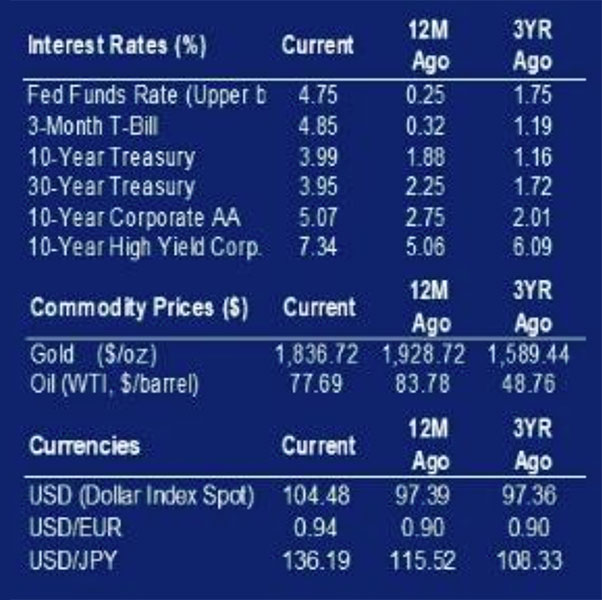The second estimate of fourth quarter GDP was front and center this week as a slew of economic data releases took place.
The revised result was weaker than expected with a reading of 2.7% compared to an expectation of 2.9%. One of the factors contributing to the weaker result relative to the initial estimate was a downward revision of consumer spending during the period.
The revision took the original estimate down from 2.1% for the quarter to 1.4%. Other positive contributors included inventory investment and government spending. Housing continued to be a detractor.
Weakness in Housing
The weakness in the housing sector was also seen in the most recent results from the S&P/Case-Shiller US National Home Price Index released this week.
The latest data, which is as of December 2022, indicated a 0.50% month-over-month decline for the 20-city composite. The year-over-year figure also reflected ongoing weakness as the increase in prices decelerated from 6.8% in November to 4.6% in December.
Consumer Results
Despite the reduction in estimated fourth quarter GDP growth the U.S. consumer provided some stronger than expected results in this week’s data. Personal income and expenditures were both significantly higher than their prior readings as of the end of January.
Income increased by 0.60% compared to the prior period’s 0.30% and expenditures rose by a robust 1.8% compared to -0.10% for the month of December.
Interestingly, as consumers saw their incomes and expenditures increase in January their confidence actually declined in February according to the Conference Board. The index, which is currently at 102.9, declined from a prior reading of 106.0.
This example of conflicting data, stronger consumer spending alongside declining confidence is making it difficult for investors to have a high level of conviction in trying to discern the strength and direction of the overall economy.
Equity Markets
Equity markets reacted negatively to the data released over the past week as both domestic and international markets registered declines.
In the U.S., the MSCI USA Index fell 1.0% for the week while the EAFE Index, which measures returns for developed foreign markets, declined by 0.3%. Countering the negative result from large cap equities were positive returns for small cap issues.
Both the MSCI Small Cap Index and the Russell 2000 Index were marginally positive for the week and continue to outpace the large cap indices on a year-to-date basis with returns of 8.6% and 8.0%, respectively.
Negative Bond Returns
Bonds also experienced negative returns for the week with aggregate indices declining approximately 0.5%. Year-to-date returns were pushed into negative territory as well, as aggregate indices now register a return of approximately -0.2%.
Concerns that the Federal Reserve will pursue a “higher for longer” approach to interest rate policy is weighing on fixed income investors as the 10- year U.S. Treasury yield rose from 3.92% to 3.99% for the week.
Both the MSCI Small Cap Index and the Russell 2000 Index were marginally positive for the week and continue to outpace the large cap indices on a year-to-date basis with returns of 8.6% and 8.0%, respectively.
Investment and Insurance Products are:
- NOT INSURED BY THE FDIC
- NOT INSURED BY ANY FEDERAL GOVERNMENT AGENCY
- NOT A DEPOSIT OF OTHER OBLIGATION OF, OR GUARANTEED BY, HERRING BANK, OR ANY BANK AFFILIATE
- SUBJECT TO INVESTMENT RISKS, INCLUDING POSSIBLE LOSS OF THE PRINCIPAL AMOUNT INVESTED



